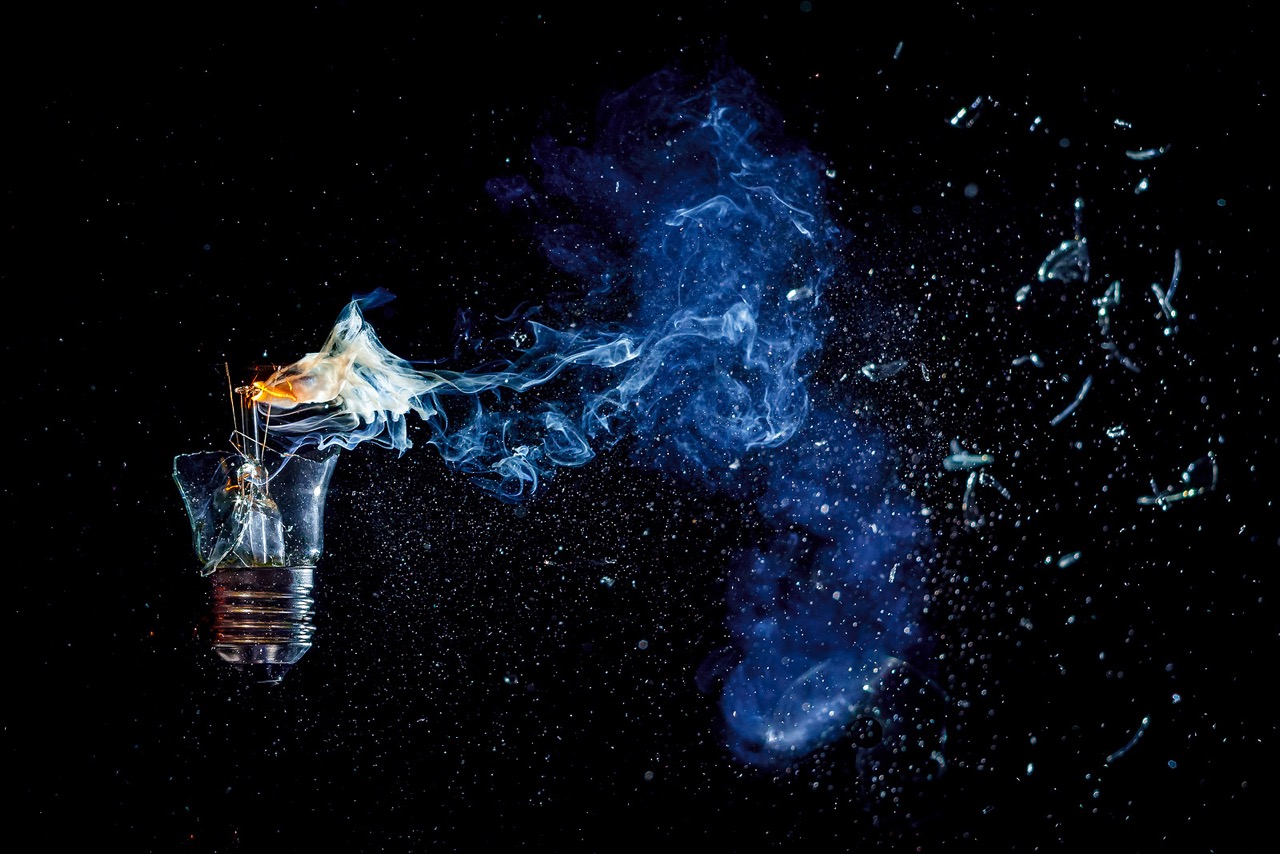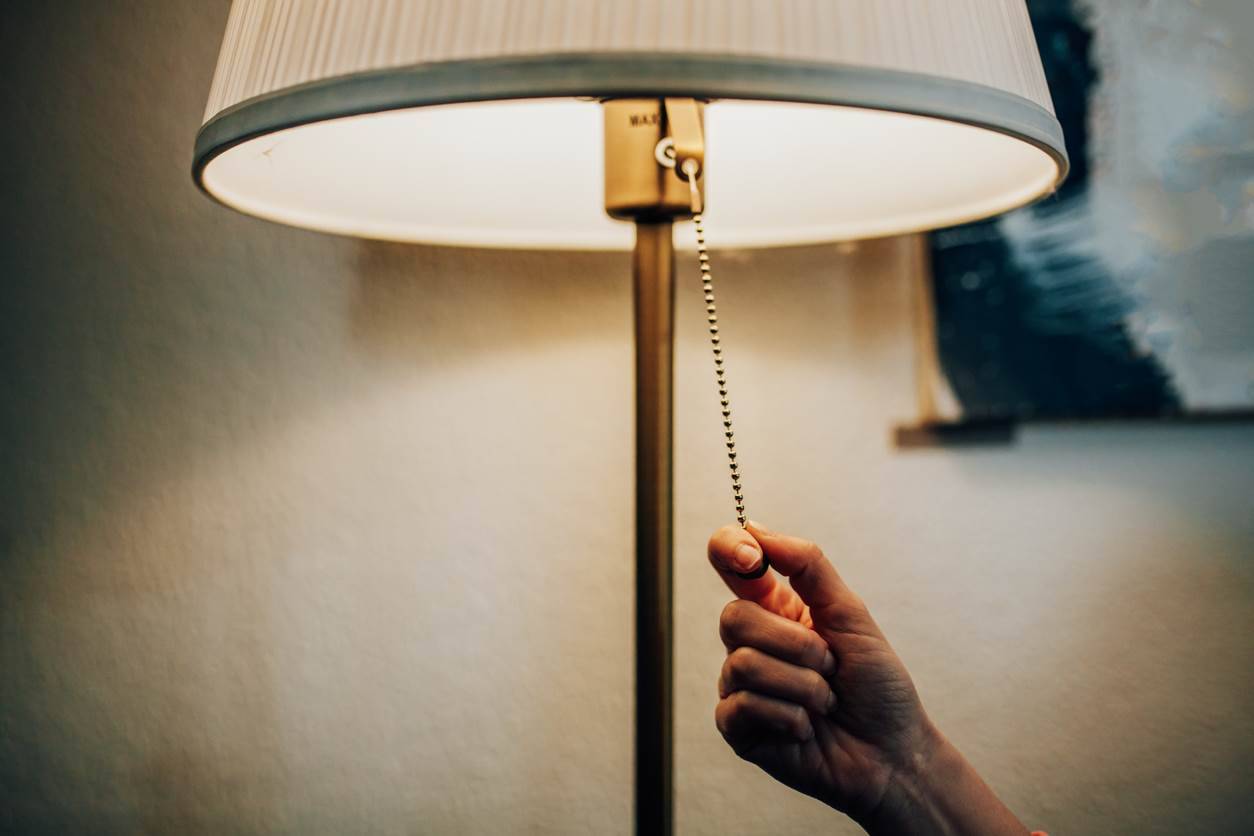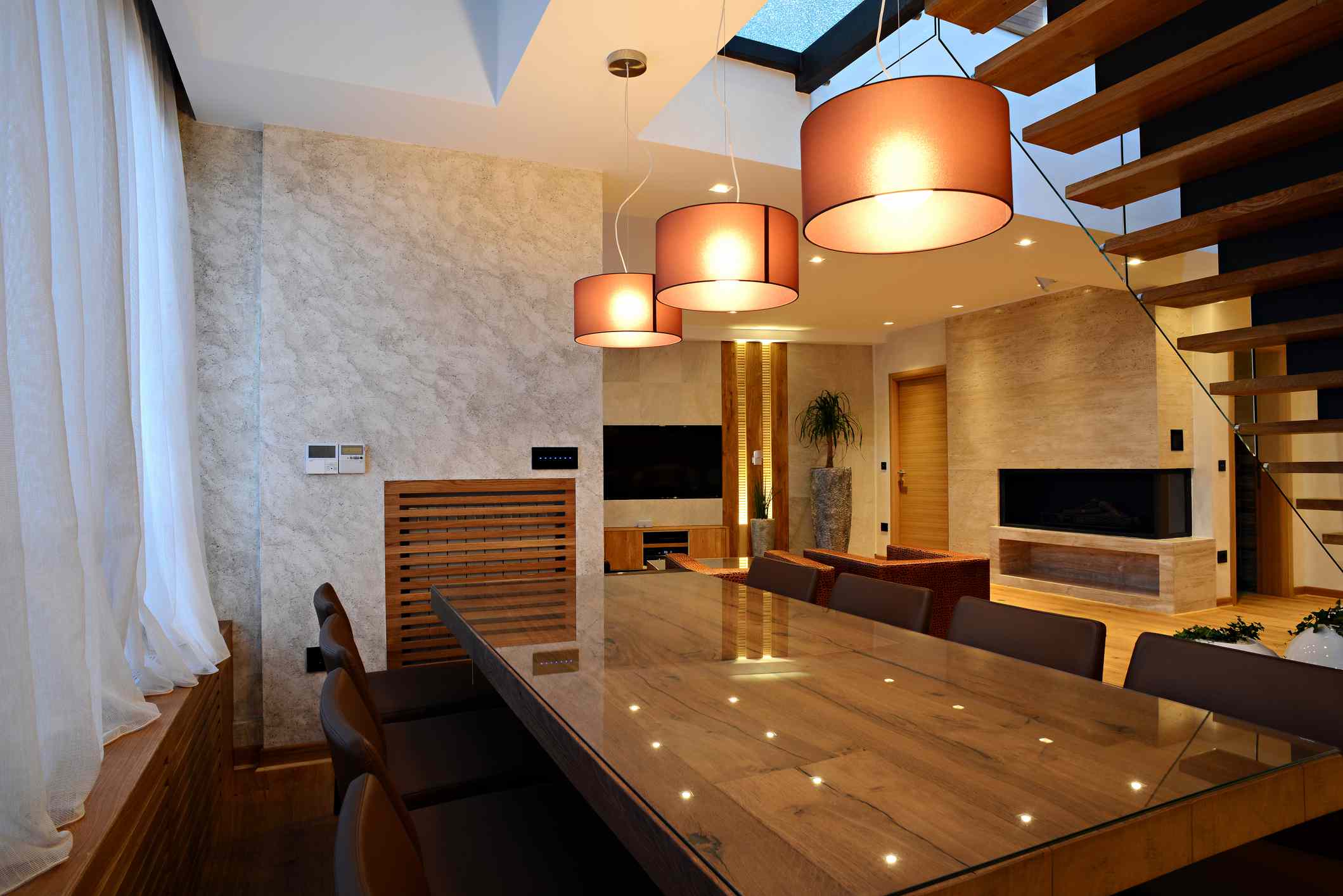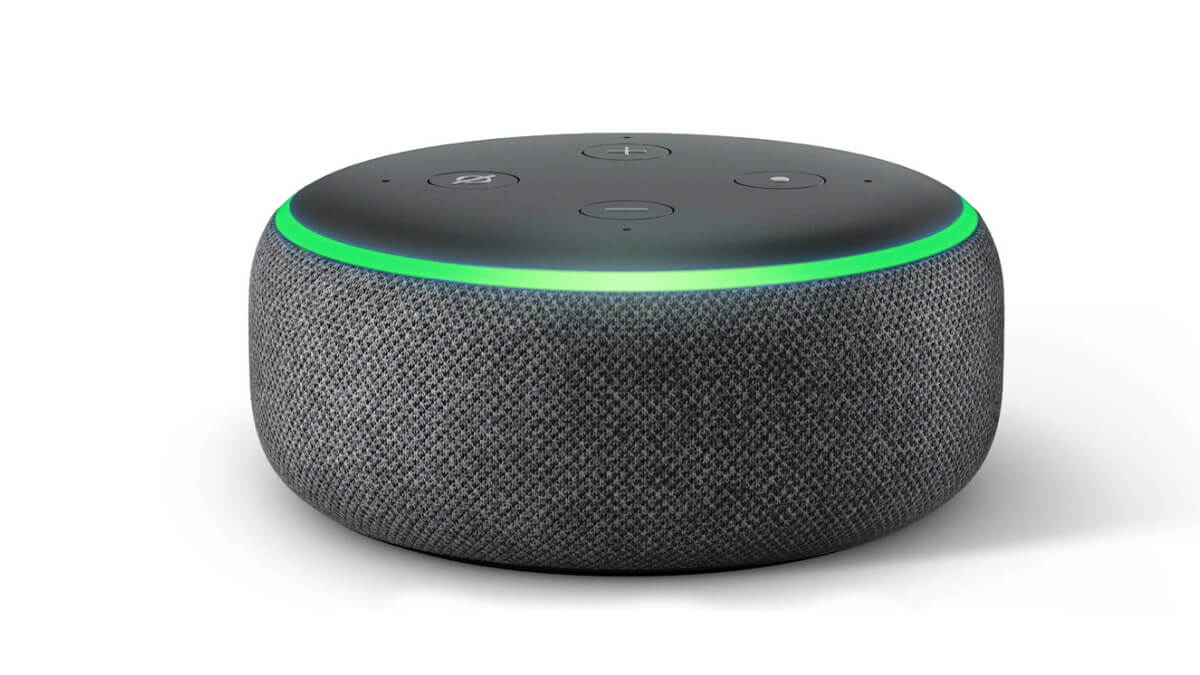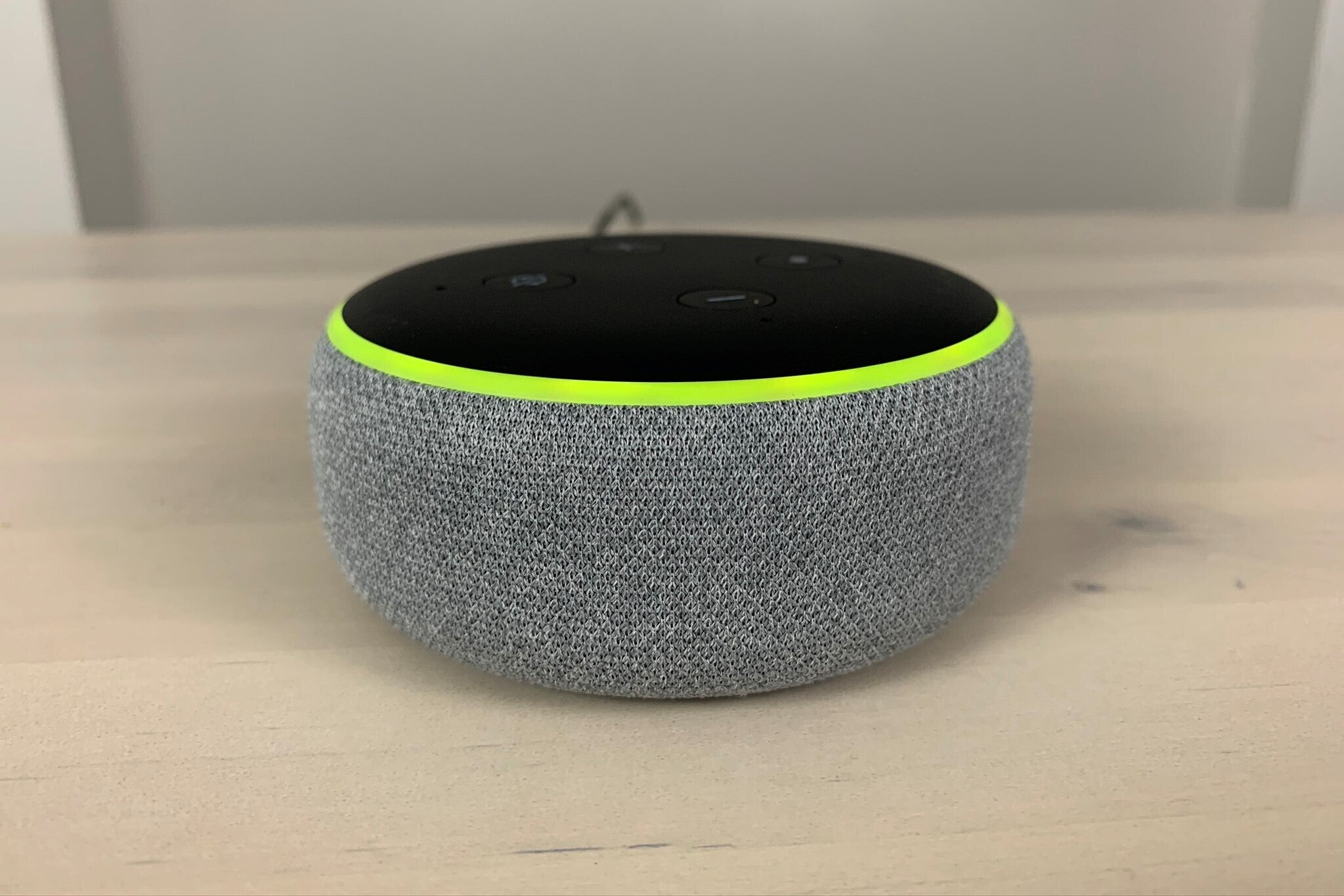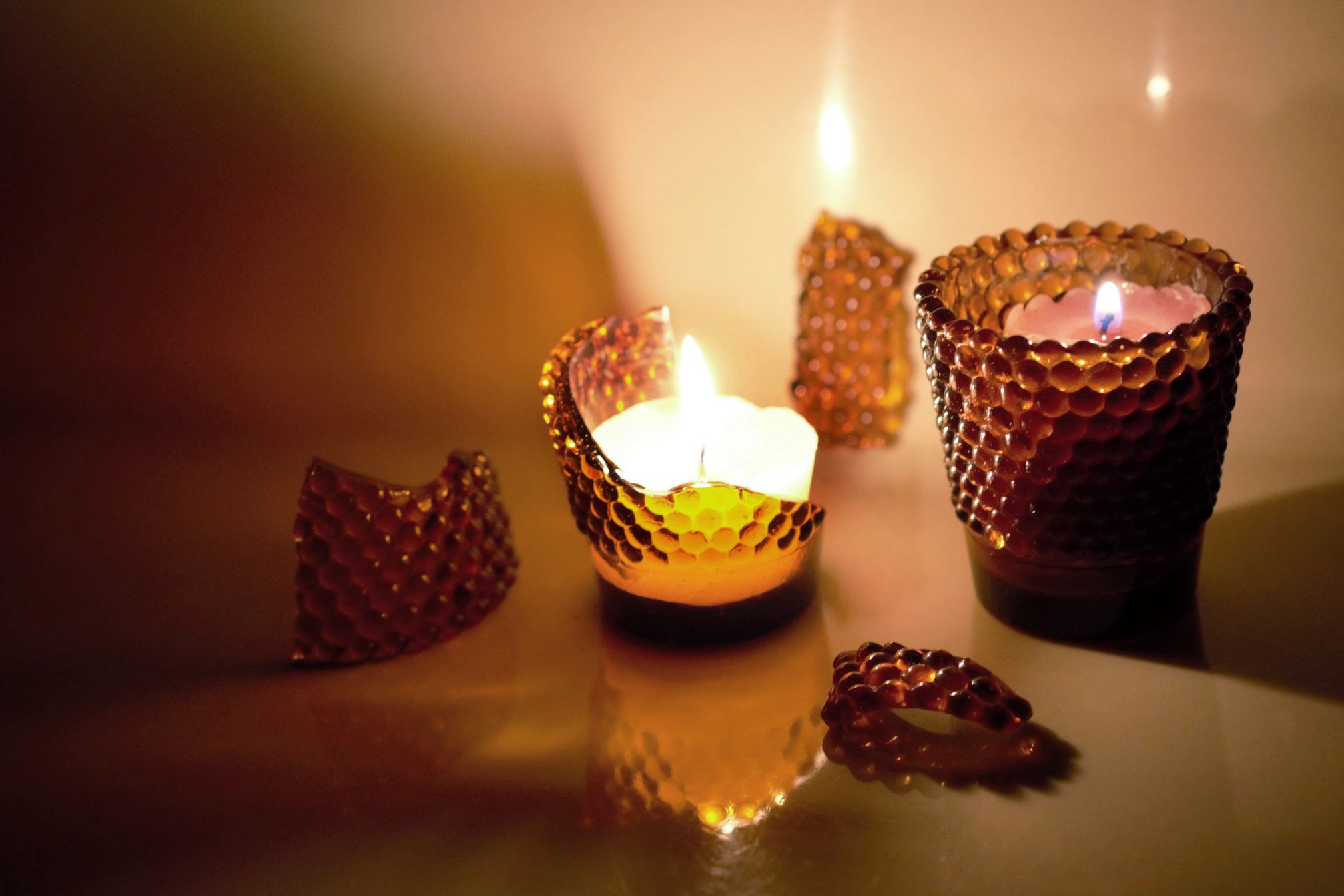Home>Furniture>Why Does Light From The Sun Dry The Glue When Light From The Desk Lamp Does Not
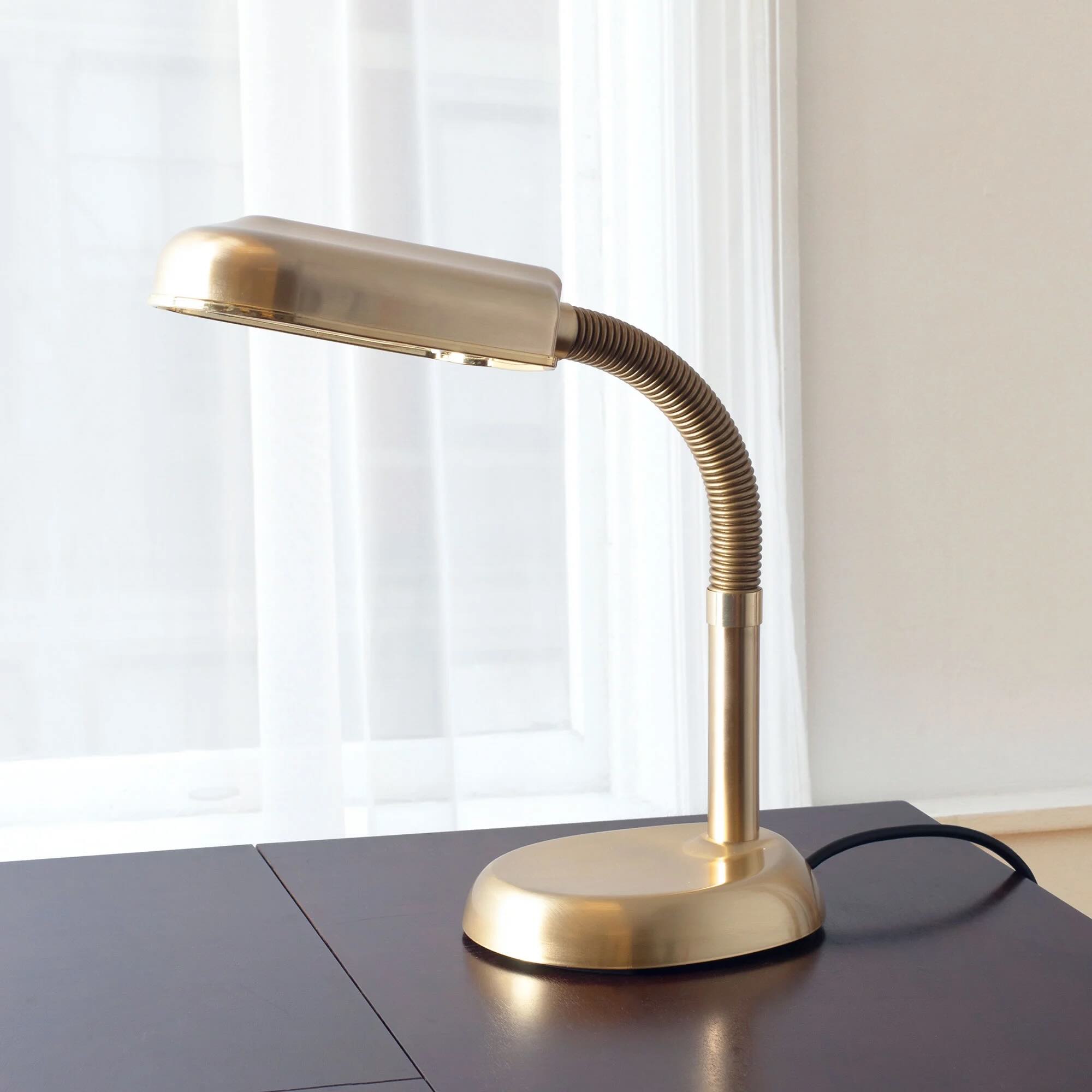

Furniture
Why Does Light From The Sun Dry The Glue When Light From The Desk Lamp Does Not
Modified: December 7, 2023
Discover why sunlight dries furniture glue while desk lamp light does not in this informative article. Understand the impact of different light sources on furniture restoration.
(Many of the links in this article redirect to a specific reviewed product. Your purchase of these products through affiliate links helps to generate commission for Storables.com, at no extra cost. Learn more)
Introduction
When it comes to bonding materials together, glue is an essential tool. Whether you’re repairing a broken chair leg, assembling a new piece of furniture, or working on a craft project, glue provides the strength and adhesion needed to bring your creations to life. But have you ever wondered why some glues dry faster in sunlight while others take longer?
In this article, we will explore the fascinating science behind the drying process of glue and the role that light plays in this transformation. Specifically, we will focus on why light from the sun has a drying effect on glue, while light from a desk lamp does not produce the same result.
To understand this phenomenon, we need to delve into the intricate processes that take place when glue dries and examine the differences between sunlight and artificial light sources. Join us on this enlightening journey as we uncover the secrets behind glue drying and shed light on the unique properties of sunlight.
So, why does light from the sun dry the glue, while light from a desk lamp does not? Let’s find out!
Key Takeaways:
- Sunlight’s higher intensity, UV radiation, and IR radiation accelerate glue drying, creating stronger bonds. Desk lamp light may be less effective due to lower intensity and absence of UV and IR radiation.
- Understanding the impact of light on glue drying helps in choosing the right light source for efficient and effective results. Sunlight’s unique properties make it a powerful catalyst for creating lasting bonds.
Read more: How To Remove Dry Nail Glue From Carpet
Understanding Glue Drying Processes
Before we explore the specific role of light in glue drying, let’s first have a basic understanding of the overall drying process. When you apply glue to a surface, it initially has a high moisture content. As the glue dries, this moisture evaporates, causing the glue to harden and create a strong bond between the joined materials.
Glue drying is a complex chemical and physical process that involves several factors. One of these key factors is the presence of light, which can accelerate or inhibit the drying process depending on various parameters.
Light influences the drying process by interacting with different components of the glue. This interaction can affect the rate of moisture evaporation, as well as the chemical reactions that take place during the drying process.
Now, let’s delve deeper into the role of light and explore the differences between sunlight and artificial light sources.
Key Takeaways:
- Sunlight’s higher intensity, UV radiation, and IR radiation accelerate glue drying, creating stronger bonds. Desk lamp light may be less effective due to lower intensity and absence of UV and IR radiation.
- Understanding the impact of light on glue drying helps in choosing the right light source for efficient and effective results. Sunlight’s unique properties make it a powerful catalyst for creating lasting bonds.
Read more: How To Remove Dry Nail Glue From Carpet
Understanding Glue Drying Processes
The Role of Light in Glue Drying
Light plays a crucial role in the drying process of glue. When light interacts with the glue, it can influence the rate of evaporation and the chemical reactions that occur during the drying phase.
When exposed to light, certain components of the glue, such as binders and solvents, undergo photochemical reactions. These reactions can break down the molecules present in the glue, resulting in faster evaporation of moisture and an accelerated drying process.
Additionally, light can generate heat, which contributes to the drying process. When light energy is absorbed by the glue, it can raise the temperature of the adhesive, causing the moisture present in the glue to evaporate more rapidly.
However, it’s important to note that not all types of light have the same effect on glue drying. Sunlight, which consists of a wide spectrum of light, including ultraviolet (UV) radiation, visible light, and infrared (IR) radiation, can have different impacts compared to artificial light sources like desk lamps.
Next, let’s explore the specific effects of sunlight on glue drying and the factors that differentiate it from artificial light sources.
Key Takeaways:
- Sunlight’s higher intensity, UV radiation, and IR radiation accelerate glue drying, creating stronger bonds. Desk lamp light may be less effective due to lower intensity and absence of UV and IR radiation.
- Understanding the impact of light on glue drying helps in choosing the right light source for efficient and effective results. Sunlight’s unique properties make it a powerful catalyst for creating lasting bonds.
Read more: How To Remove Dry Nail Glue From Carpet
Understanding Glue Drying Processes
The Role of Light in Glue Drying
Light plays a crucial role in the drying process of glue. When light interacts with the glue, it can influence the rate of evaporation and the chemical reactions that occur during the drying phase.
When exposed to light, certain components of the glue, such as binders and solvents, undergo photochemical reactions. These reactions can break down the molecules present in the glue, resulting in faster evaporation of moisture and an accelerated drying process.
Additionally, light can generate heat, which contributes to the drying process. When light energy is absorbed by the glue, it can raise the temperature of the adhesive, causing the moisture present in the glue to evaporate more rapidly.
Sunlight vs. Artificial Light
Not all types of light have the same effect on glue drying. Sunlight, which consists of a wide spectrum of light, including ultraviolet (UV) radiation, visible light, and infrared (IR) radiation, can have different impacts compared to artificial light sources like desk lamps.
Sunlight contains UV radiation, which has a shorter wavelength than visible light. UV radiation possesses higher energy levels and can promote faster photochemical reactions in the glue, leading to quicker drying times. This is one of the reasons why glue exposed to sunlight dries faster compared to artificial light sources.
Furthermore, sunlight also contains IR radiation, which provides additional heat energy to the glue. The heat generated by IR radiation further accelerates the evaporation of moisture, contributing to the overall drying process.
In contrast, desk lamps usually emit visible light with a relatively lower intensity of UV radiation and negligible IR radiation. As a result, the drying process with desk lamp light may be slower compared to sunlight.
Now that we understand the differences between sunlight and artificial light, let’s delve deeper into the specific effects of sunlight on glue drying.
Factors Affecting Glue Drying
Several factors influence the drying process of glue. Understanding these factors can help us comprehend why sunlight has a different drying effect compared to artificial light sources like desk lamps. Let’s explore these factors:
Intensity of Light
The intensity of light refers to the amount of light energy reaching the surface of the glue. Higher intensity light can provide more energy for photochemical reactions and heat generation, thus speeding up the drying process. Sunlight, being a powerful and intense light source, can significantly impact the rate of glue drying compared to the relatively lower intensity of desk lamp light.
Read more: Why Does My Dishwasher Not Dry
Wavelength of Light
Light is composed of different wavelengths, with each wavelength carrying a specific amount of energy. As mentioned earlier, sunlight consists of a wide spectrum of light, including UV radiation, visible light, and IR radiation. The shorter wavelength of UV radiation, in particular, can lead to faster photochemical reactions and quicker drying times. In contrast, desk lamp light primarily emits visible light with a longer wavelength, which may not have the same drying effect on glue.
Heat Generation
Another important factor affecting glue drying is the heat generated by the light source. As light energy is absorbed by the glue, it causes the temperature of the adhesive to rise. Higher temperatures accelerate the evaporation of moisture, resulting in faster drying. Sunlight, with its significant IR radiation content, provides additional heat energy to the glue, further expediting the drying process. In contrast, desk lamps may generate less heat, thus potentially leading to slower glue drying.
By considering these factors, we can begin to understand why sunlight tends to have a more pronounced effect on glue drying compared to artificial light sources. However, it’s essential to note that the specific characteristics of the glue and the application method can also impact the drying process.
Now, let’s move on to exploring the effects of sunlight on glue drying in more detail.
Factors Affecting Glue Drying
Intensity of Light
The intensity of light plays a crucial role in the drying process of glue. It refers to the amount of light energy that reaches the surface of the glue. The intensity can vary depending on the light source and its proximity to the glue.
Higher intensity light provides more energy for photochemical reactions and heat generation, thus accelerating the drying process. Sunlight, being a powerful and natural light source, has a significantly higher intensity compared to artificial light sources like desk lamps. When exposed to sunlight, the glue is exposed to a greater amount of light energy, which leads to faster drying times.
In contrast, the intensity of light from a desk lamp is typically lower. Although desk lamps can provide sufficient light for visibility, they may not offer the same level of intensity as sunlight. As a result, the drying process with desk lamp light might be slower compared to sunlight.
It’s important to note that the distance between the light source and the glue also affects the intensity of light reaching the surface. The closer the light source, the higher the intensity. Conversely, increasing the distance between the light source and the glue reduces the intensity of light. Therefore, when using a desk lamp, positioning it closer to the glue can help enhance the drying process.
Overall, the intensity of light has a significant impact on glue drying. Higher intensity light, such as sunlight, can provide more energy for photochemical reactions and heat generation, speeding up the drying process. However, it’s crucial to consider other factors, such as the wavelength of light and heat generation, which we will explore next.
Now that we understand the role of light intensity, let’s move on to examining the impact of the wavelength of light on glue drying.
Factors Affecting Glue Drying
Read more: Why Does My Dishwasher Not Dry
Wavelength of Light
The wavelength of light is another crucial factor that affects the drying process of glue. Different wavelengths of light carry varying amounts of energy, which can influence the speed at which the glue dries.
Sunlight consists of a wide spectrum of light, including ultraviolet (UV) radiation, visible light, and infrared (IR) radiation. UV radiation has a shorter wavelength and higher energy compared to visible light and IR radiation. When UV radiation interacts with the glue, it can lead to faster photochemical reactions and, consequently, quicker drying times.
UV radiation has the ability to break down the molecules present in the glue, promoting the evaporation of moisture and the formation of a strong bond between the materials being joined. This is one of the reasons why glue exposed to sunlight dries faster compared to artificial light sources like desk lamps, which primarily emit visible light.
On the other hand, the longer wavelength of visible light in desk lamp light may not have the same effect on glue drying as UV radiation. Although visible light can still contribute to the drying process to some extent, the lack of UV radiation in desk lamp light may result in slower drying times.
It’s important to note that the wavelength spectrum of light can vary depending on the light source. Some artificial light sources, such as UV lamps or LED lights, may emit UV radiation that can mimic the drying effect of sunlight. These light sources can accelerate glue drying, similar to sunlight.
In summary, the wavelength of light influences glue drying. The shorter wavelength and higher energy of UV radiation present in sunlight can lead to faster drying times compared to the longer wavelength of visible light in desk lamp light.
Now let’s move on to exploring the role of heat generation in glue drying.
Factors Affecting Glue Drying
Heat Generation
Heat generation is a significant factor that affects the drying process of glue. When light interacts with the glue, it can generate heat, which plays a crucial role in accelerating the evaporation of moisture and speeding up the drying process.
Sunlight, with its broad spectrum of light, including infrared (IR) radiation, provides additional heat energy to the glue. IR radiation has longer wavelengths and lower energy compared to visible light and UV radiation. As the glue absorbs the IR radiation from sunlight, its temperature increases.
The heat generated by the IR radiation raises the temperature of the adhesive, resulting in faster moisture evaporation. This increased evaporation rate contributes to the overall drying process, allowing the glue to solidify and create a strong bond between the joined materials more rapidly.
On the other hand, desk lamps typically generate less heat compared to sunlight. While some heat may be produced by a desk lamp, it may not be sufficient to significantly impact the drying process. This can lead to slower drying times compared to sunlight.
It’s important to note that excessive heat can have negative effects on the drying process as well. Extremely high temperatures can cause the glue to cure too quickly, potentially resulting in weaker bonds or even damage to the materials being joined. Therefore, it’s essential to follow the recommended temperature guidelines provided by the glue manufacturer.
By considering heat generation along with other factors such as light intensity and wavelength, we can better understand why sunlight has a greater drying effect on glue compared to artificial light sources like desk lamps.
Now that we have explored the factors affecting glue drying, let’s move on to discuss the specific effects of sunlight on the drying process.
Read more: Why Does My Lamp Flicker
The Effects of Sunlight on Glue Drying
When it comes to glue drying, sunlight has unique effects that differentiate it from artificial light sources. Sunlight, with its broad spectrum of light that includes ultraviolet (UV) radiation, visible light, and infrared (IR) radiation, can have significant impacts on the drying process of glue.
Ultraviolet (UV) Radiation
One of the key components of sunlight is UV radiation. UV radiation has a shorter wavelength and higher energy compared to visible light. When UV radiation interacts with the glue, it triggers photochemical reactions that result in the breakdown of the glue’s molecules. This breakdown enhances the evaporation of moisture and accelerates the drying process.
The high energy of UV radiation makes it particularly efficient in promoting the photochemical reactions needed for glue drying. UV radiation can penetrate the adhesive and break the bonds between the molecules, leading to faster moisture evaporation and a stronger, more solid bond between the joined materials.
Infrared (IR) Radiation
In addition to UV radiation, sunlight also contains infrared (IR) radiation. IR radiation has longer wavelengths and lower energy compared to UV radiation. When the glue is exposed to IR radiation, it absorbs the heat energy, raising the temperature of the adhesive.
The increased temperature accelerates the evaporation of moisture present in the glue, expediting the drying process. The heat generated by IR radiation helps to remove excess moisture and allows the glue to solidify more quickly, resulting in a stronger bond.
Combined, the effects of UV radiation and IR radiation in sunlight create an optimal environment for glue drying. The UV radiation breaks down the glue molecules, while the heat generated by IR radiation increases the evaporation rate of moisture, resulting in faster and more efficient drying.
It’s important to note that while sunlight can be beneficial for glue drying, prolonged exposure to sunlight can cause some glues to degrade or discolor. Therefore, it’s essential to follow the manufacturer’s recommendations and use appropriate glues for outdoor applications or areas exposed to direct sunlight.
Now that we understand the effects of sunlight on glue drying, let’s compare it to desk lamp light to gain a clearer perspective.
Read more: Why Does My Lamp Flicker
The Effects of Sunlight on Glue Drying
Ultraviolet (UV) Radiation
One of the primary components of sunlight that affects glue drying is ultraviolet (UV) radiation. UV radiation is a type of electromagnetic radiation with a shorter wavelength and higher energy compared to visible light.
When glue is exposed to UV radiation, it triggers a process called photochemical reaction. The high energy of UV radiation allows it to break down the chemical bonds within the glue molecules. As a result, the glue undergoes a structural change and becomes more volatile, leading to accelerated evaporation of moisture.
The breaking down of the glue molecules due to UV radiation leads to faster drying times. The increased evaporation of moisture allows the glue to solidify and create a strong bond between the joined materials more rapidly.
It’s important to note that not all glues are equally affected by UV radiation. Some glues, like UV-curing adhesives, are specifically formulated to cure when exposed to UV light. These glues contain photoinitiators that are activated by UV radiation, initiating the curing process almost instantaneously.
However, for traditional glues that do not contain specific UV-curing properties, the effects of UV radiation may vary. Some traditional glues may experience color changes or degradation when exposed to prolonged or intense UV radiation. It’s crucial to consider the compatibility of the glue with UV exposure and consult the manufacturer’s guidelines for optimal results.
Overall, the presence of UV radiation in sunlight can significantly impact the glue drying process. It promotes photochemical reactions that break down the glue molecules, resulting in faster moisture evaporation and a stronger bond between materials.
With a better understanding of the effects of UV radiation, let’s continue to explore the other factors that differentiate sunlight from desk lamp light in the glue drying process.
Read more: Why Does My Lamp Flicker
The Effects of Sunlight on Glue Drying
Infrared (IR) Radiation
In addition to ultraviolet (UV) radiation, sunlight also contains infrared (IR) radiation, which plays a significant role in the glue drying process. IR radiation has longer wavelengths and lower energy compared to UV radiation.
When glue is exposed to IR radiation, it absorbs the heat energy generated by the radiation. This absorption of heat leads to an increase in the temperature of the adhesive and its surrounding environment.
The elevated temperature caused by IR radiation has a direct impact on the drying process of the glue. It accelerates the evaporation of moisture present in the glue, facilitating its transformation into a solid state more rapidly.
The heat generated by the IR radiation helps to remove excess moisture from the adhesive, allowing it to dry more efficiently and effectively. The increased drying rate promotes a stronger bond between the joined materials and reduces the waiting time for the glue to fully cure.
However, it’s important to note that excessive heat generated by IR radiation can have negative consequences. Extremely high temperatures may cause the glue to cure too quickly, leading to weaker bonds or even damage to the materials being joined. It’s crucial to follow the recommended temperature guidelines provided by the glue manufacturer for optimal results.
In contrast to sunlight, desk lamp light typically has lower or negligible levels of IR radiation. As a result, the drying process with desk lamp light may be slower compared to sunlight.
Overall, the presence of infrared radiation in sunlight contributes to the efficient and effective drying of glue. It helps to accelerate the evaporation of moisture, ensuring a stronger bond between the materials. However, caution must be exercised to prevent overheating during the drying process.
With a better understanding of the effects of IR radiation, let’s move on to comparing the drying effects of sunlight and desk lamp light.
Comparison: Sunlight vs. Desk Lamp Light
Now that we have explored the specific effects of sunlight on glue drying, it’s time to compare sunlight to desk lamp light to understand the differences in their drying capabilities.
Read more: What Does Brake Lamp Light Mean
Intensity Comparison
One key factor that distinguishes sunlight from desk lamp light is the intensity of the light. Sunlight, being a natural light source, has a significantly higher intensity compared to the light emitted by a desk lamp.
The higher intensity of sunlight provides more energy for photochemical reactions and heat generation, resulting in faster drying times. In contrast, desk lamp light, while sufficient for visibility, usually has a lower intensity that may lead to slower drying of the glue.
Wavelength Comparison
Another factor to consider is the difference in wavelength between sunlight and desk lamp light. Sunlight contains a wide spectrum of light, including ultraviolet (UV) radiation, visible light, and infrared (IR) radiation.
UV radiation from sunlight has a shorter wavelength and higher energy compared to the visible light emitted by desk lamps. This higher energy allows UV radiation to promote faster photochemical reactions and more efficient moisture evaporation, contributing to accelerated drying.
While desk lamps emit visible light, which can still contribute to the drying process, the absence of UV radiation limits the drying efficiency compared to sunlight.
Heat Generation Comparison
The heat generated by the light source is another aspect that differentiates sunlight from desk lamp light in terms of drying capabilities. Sunlight, with its IR radiation content, provides additional heat energy to the glue, accelerating moisture evaporation.
On the other hand, the heat generated by desk lamps may be less significant and may not contribute as much to the drying process. The absence of IR radiation in desk lamp light limits the amount of heat available, potentially leading to slower drying times.
Overall, sunlight’s higher intensity, the presence of UV radiation, and the additional heat from IR radiation make it a more efficient source for glue drying compared to desk lamp light. However, the specific type of glue, its compatibility with UV exposure, and other factors such as temperature guidelines provided by the manufacturer should also be considered when choosing a light source for the drying process.
With a comprehensive comparison between sunlight and desk lamp light, we now have a better understanding of why sunlight tends to dry glue faster compared to artificial light sources.
Comparison: Sunlight vs. Desk Lamp Light
Read more: What Does Brake Lamp Light Mean
Intensity Comparison
When it comes to glue drying, one of the significant differences between sunlight and desk lamp light is the intensity of the light source.
Sunlight, being a natural and powerful light source, has a significantly higher intensity compared to the light emitted by a desk lamp. The intensity of sunlight is influenced by various factors, such as the time of day, weather conditions, and geographical location.
The higher intensity of sunlight means that more light energy is being emitted and reaching the surface of the glue. This increased energy provides a greater amount of energy for photochemical reactions and heat generation during the drying process. As a result, the glue dries faster compared to when exposed to the lower intensity of desk lamp light.
On the other hand, desk lamp light is designed primarily for providing sufficient illumination for indoor settings rather than specific applications like glue drying. While desk lamps can still emit a considerable amount of light, the intensity is generally lower compared to sunlight.
The lower intensity of desk lamp light slows down the drying process of glue. The reduced energy output limits the rate at which photochemical reactions occur and heat is generated, resulting in a longer drying time compared to sunlight.
Therefore, if you’re looking for a quicker drying process, sunlight, with its higher intensity, is generally more effective than desk lamp light. However, it’s important to note that the specific type of glue, the application method, and other environmental factors can also influence the drying process.
It’s worth mentioning that if you are using a desk lamp for glue drying, positioning it closer to the glue can help compensate for the lower intensity by providing more concentrated light energy.
In summary, the higher intensity of sunlight accelerates the drying process of glue, while the lower intensity of desk lamp light may lead to slower drying times.
Now that we have explored the intensity comparison, let’s move on to discussing the differences in wavelength between sunlight and desk lamp light.
Comparison: Sunlight vs. Desk Lamp Light
Wavelength Comparison
Another important factor to consider when comparing sunlight and desk lamp light for glue drying is their difference in wavelength.
Sunlight consists of a broad spectrum of light, including ultraviolet (UV) radiation, visible light, and infrared (IR) radiation. Each of these components has a different wavelength and energy level.
UV radiation has a shorter wavelength and higher energy compared to the other components of sunlight. When glue is exposed to UV radiation, it triggers photochemical reactions that break down the molecules in the glue, accelerating the drying process. UV radiation is particularly effective in promoting faster evaporation of moisture and enhancing bond formation between materials.
In contrast, visible light, which is the primary component of desk lamp light, has a longer wavelength and lower energy compared to UV radiation. While visible light still contributes to glue drying to some extent, its effectiveness is not as potent as that of UV radiation.
The longer wavelength of visible light means that it carries less energy, resulting in a slower rate of photochemical reactions and moisture evaporation. This can lead to relatively longer drying times when using desk lamp light compared to sunlight.
It’s important to note that some artificial light sources, such as UV lamps or LED lights, are designed to emit specific wavelengths, including UV radiation. These light sources can mimic the drying effects of sunlight and promote faster glue drying. However, typical desk lamps used for everyday illumination usually do not emit UV radiation in significant amounts.
In summary, the shorter wavelength and higher energy of UV radiation in sunlight make it more efficient in promoting glue drying compared to the longer wavelength of visible light in desk lamp light. This difference in wavelength contributes to the faster drying times observed when using sunlight.
Next, let’s explore the role of heat generation in glue drying and its difference between sunlight and desk lamp light.
Comparison: Sunlight vs. Desk Lamp Light
Heat Generation Comparison
Heat generation is an important factor to consider when comparing sunlight and desk lamp light for glue drying. The heat generated by the light source can significantly affect the drying process.
When exposed to sunlight, the glue absorbs not only light energy but also infrared (IR) radiation. IR radiation has longer wavelengths and lower energy compared to other components of sunlight, such as ultraviolet (UV) radiation and visible light. This IR radiation contributes to heat generation.
The heat generated by IR radiation raises the temperature of the adhesive, which in turn accelerates the evaporation of moisture present in the glue. The increased temperature helps to speed up the drying process, allowing the glue to solidify and create a stronger bond between materials more quickly.
In contrast, desk lamp light typically generates less heat compared to sunlight. While some heat may be produced by the light bulb in a desk lamp, it is often not sufficient to significantly impact the drying process. The absence of substantial heat generation in desk lamp light can result in slower drying times compared to sunlight.
It is worth noting that excessive heat can have negative effects on glue drying. Extremely high temperatures can cause the glue to cure too quickly and may result in weaker bonds or even damage to the materials being joined. It is essential to follow the temperature guidelines provided by the glue manufacturer to ensure optimal results.
In summary, sunlight’s ability to generate heat through infrared radiation contributes to a faster drying process. On the other hand, desk lamp light generally generates less heat, which can result in slower glue drying times.
With a comprehensive comparison between sunlight and desk lamp light in terms of intensity, wavelength, and heat generation, it becomes clear why sunlight tends to be more effective in glue drying. However, other factors, such as the specific type of glue used and the recommended guidelines from the manufacturer, should also be considered for the optimal drying process.
Now that we have compared sunlight and desk lamp light, let’s conclude our discussion.
Conclusion
Glue drying is a fascinating process influenced by various factors, with light playing a significant role in its acceleration. By understanding the effects of sunlight and desk lamp light on glue drying, we can make informed decisions when choosing the appropriate light source for our projects.
Sunlight, with its higher intensity, shorter wavelength of ultraviolet (UV) radiation, and the heat generated by infrared (IR) radiation, tends to have a more pronounced effect on glue drying compared to desk lamp light. The intensity of sunlight provides more energy for photochemical reactions and heat generation, resulting in faster drying times. The UV radiation in sunlight breaks down the glue molecules, while the heat from IR radiation accelerates moisture evaporation.
In contrast, desk lamp light, while suitable for indoor lighting, typically has lower intensity, longer wavelength, and may not generate sufficient heat for efficient glue drying. However, positioning the lamp closer to the glue can help compensate for the lower intensity and enhance drying to some extent.
Factors such as the specific type of glue, its compatibility with UV exposure, and temperature guidelines from the manufacturer should also be considered to ensure the optimal drying process.
When embarking on a glue-related project, it is important to assess the conditions and requirements to determine whether sunlight or a desk lamp would be the most suitable light source for efficient and effective glue drying. By considering intensity, wavelength, and heat generation, you can achieve the desired results in a timely manner.
Remember to follow safety precautions and manufacturer’s guidelines when working with glues and light sources. Whether you’re repairing furniture, working on crafts, or assembling new creations, understanding the impact of light on glue drying can lead to successful and satisfying results.
So go ahead, harness the power of light, and let it work its magic on your glue to create strong, lasting bonds!
Frequently Asked Questions about Why Does Light From The Sun Dry The Glue When Light From The Desk Lamp Does Not
Was this page helpful?
At Storables.com, we guarantee accurate and reliable information. Our content, validated by Expert Board Contributors, is crafted following stringent Editorial Policies. We're committed to providing you with well-researched, expert-backed insights for all your informational needs.
